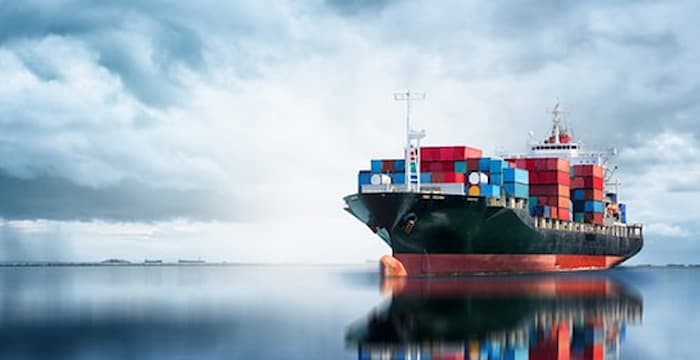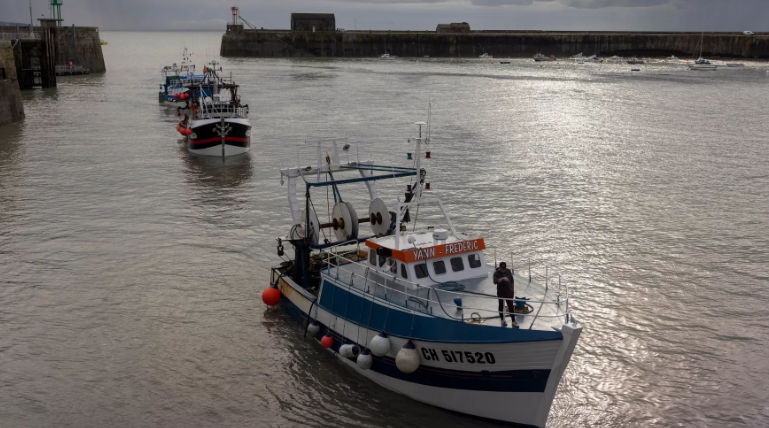In the Colombian Caribbean, an artificial island faces threats from rising seas and coastal erosion
In the San Bernardo archipelago, Santa Cruz del Islote is struggling to survive as its inhabitants try to buy time.
From Cartagena, in northern Colombia, the San Bernardo archipelago can be reached in just two hours by motorboat—at least when the sea is calm. On this day, however, turbulent waters stirred by Hurricane Melissa, which recently devastated Jamaica, made the journey rough. Once the sea calms, a paradisiacal landscape emerges: ten coral islands of varying sizes, most covered in mangroves. One of them stands out: entirely artificial, Santa Cruz del Islote rises as a dense cluster of buildings perched on water—an island that could one day be swallowed by rising seas.
Colonized 200 years ago by Afro-descendant fishermen seeking abundant local fish stocks, the original islet gradually expanded. Adrian Caraballo, 27, an environmental leader from the community, explains that today more than 816 people live on its 1.5 hectares—about the size of two soccer fields. “Here, happiness is measured in smiles, not square meters,” reads a wall on the island, which has earned an unverified reputation as the most densely populated island in the world.
While the community has cultivated a simple, self-sufficient way of life, the lack of government support is evident everywhere: precarious housing, dilapidated infrastructure, no access to safe drinking water, and unreliable electricity.
“They won’t be able to live here in 25 years”
This afternoon, as every day at this hour, the streets and alleys winding through the island are flooded by the tide. Barefoot or in flip-flops, residents walk through water up to their ankles as if it were nothing unusual. Children take the opportunity to fish with small lines or sail miniature boats, dodging floating debris. “At this time of year, the water rises a lot,” shrugs an elderly woman sitting on a plastic chair.
The socio-economic precariousness of Santa Cruz del Islote is compounded by the archipelago’s vulnerability to climate change. Situated on average just 2 meters above sea level, “these nearly flat coral islands are made of limestone material primarily derived from the skeletons of relatively recent corals and mollusks that have not fully remineralized and are only partially cemented,” explains biologist Juan Manuel Diaz of the MarViva Foundation. “Because they are poorly consolidated, they are extremely vulnerable to rising seas and coastal erosion.”
Larger-scale protections, such as building a seawall, are not something the young activist believes in: “That would require studies of the sea, the soil, the wind, the currents—it costs money, and the community doesn’t have any, and the government doesn’t want to act.” Furthermore, “since the archipelago lies at the heart of a national natural park, this type of structure is prohibited,” adds Juan Manuel Diaz.
Mangroves, natural barriers
The setting sun softens the light it casts on the Caribbean Sea, whose cyan blue gradually shifts to blue-green. A gentle breeze slowly chases away the day’s suffocating, humid heat. On one of the island’s piers, a dozen children and teenagers load mangrove seedlings, one by one, onto a small, worn boat under Adrian’s guidance.
Since 2022, he has been leading, together with a group of island youths, a project called Ecosabios to reforest mangroves on the surrounding islands—the only solution, in his view, capable of buying the community some time. As the main vegetation of the islands, mangroves are being cut and degraded “to sell land for building hotels and tourist huts.” Yet in addition to being home to many species, “their dense roots play a crucial role as a filtering barrier against erosion, tides, and rising waters.”
Once loaded, the boat, dangerously top-heavy, heads toward Tintipán Island, just opposite. Through a narrow channel, it enters a clearing in the mangrove jungle. “This cleared land has been entrusted to us so that we can restore it.”
In this mosquito-filled, hostile environment, the youths wade into the murky water and get to work amid joyful chaos. Adrian, trying to guide them, reminds them how to plant: dig a hole in the muddy ground, place the seedling upright, and repeat, leaving about an arm’s length between each tree. “The tide is high tonight, it’s more difficult.”
Since 2023, the group has planted around 4,000 mangroves, the main limitation being “funding for the trees, which depends on donations.” In parallel, the youths also take part in workshops on turtle conservation and cleanup operations. The goal of Ecosabios is to “instill in the younger generation a cultural and emotional sense of belonging to the ecosystem in which they live, on which their livelihood depends and which they could lose.”
The future of a community at stake
The school also seeks to play this role of awareness. “This year, the educational project is centered on the idea of a ‘merritoire’,” explains natural science teacher Orlando Herrera, who had his class make turtles out of plastic waste that day. The goal is “to anchor ecological thinking in their relationship to the community, its culture, and their living space, helping them understand that it is all interconnected.”
“It’s a tough task,” he says, because on the island, environmental concerns clash with the main sources of employment—tourism and fishing, some practices of which threaten the ecosystem. Consequently, “the idea of the environment is often associated with the authority of the national natural park, which is seen as punitive,” in a context where the state is otherwise absent.
“They come to give fines while the hotels across the way build whatever they want without anyone saying anything,” says a resident, angry at having been fined 20 million pesos (4,600 euros) for expanding his hotel without a permit. An illegal shark aquarium where tourists swim has also sparked controversy following an accident, dividing the community. “It might not be right,” sighs one resident, “but then at least come propose alternatives.” The problem, Adrian laments, is that authorities “don’t come to engage with the community, to discuss proposals compatible with conservation that would benefit everyone.”
Meanwhile, Adrian seeks to raise awareness among parents about the island’s future through their children. “We’re making progress: at first, when we explained that they needed to stop eating turtles, parents called us crazy and scolded us.”
But the long-term future of the islands remains a taboo topic. For Juan Manuel Diaz, the state must already “anticipate the future relocation of these populations to the mainland.” If the younger generation is less attached to the island than their parents, seeing it disappear is still unthinkable. “God will protect us. Or we’ll just build a second floor,” laughs one teenager.
Source: Reporterre




